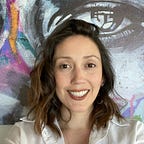How to build a UX resume, part I
Searching for a job takes work. To do it optimally, we have to organize ourselves and make a checklist of things we need to have to start the application process. One of those things is the Resume.
But what is the difference between a curriculum vitae and a resume? From my research, a resume summarizes your relevant experience and skills for a specific job, while a CV is a more extensive document that offers a comprehensive view of your professional and academic accomplishments.
In Europe, CVs are the standard for academic roles and jobs. At the same time, in the United States, customized resumes are the way to go for job applications, and typically, they only include photos if specifically asked for.
Because this article has general info that can apply to both, I will use “curriculum” and “resume” interchangeably. The main goal is to catch recruiters’ attention, go through the interview process, and get the “dream job.” Did you know from a 2018 study that recruiters take an average of 7.4 seconds to read your curriculum? We really need to work on it to stand out.
To start, we don’t have to reinvent the wheel. There are some patterns defined and a structure to follow. There are many software where to design it; you can do it on Notion, Figma, Word, etc. You can also find sites where you can choose a template, fill it with your info, and then download it. But the main idea is to keep it professional and straightforward. As designers, we have to be able to design our curriculum.
In this article, I will share some general tips to help you design your curriculum, and then, in part II, I will go into more detail about what should go in each section.
¿What to consider when designing the Curriculum Vitae?
- Ideally, only extend up to 1 page. If you have a lot of experience, you may need more pages but try to keep it to 1. You can always use synthesis power and make it to 1 page.
- Include only info related to the job position you want to apply for. Don’t include other job experiences. Always focused on the job position you are looking for.
- Choose a simple layout. Typically, it’s 1 or 2 columns. I recommend 2, leaving one narrower than the other, where, for example, in the main one you talk about your work experience, which is more important, and in the smaller one you can put your skills. Using 1 column affects readability since the text is edge-to-edge, and the recommended width is 50–75 characters per line.
- Avoid decorative fonts or images. These will make it harder to scan your information and draw more attention to what matters, which is your Design experience. As a recommendation, don’t use a profile image to avoid discrimination. They are often inappropriate because people upload casual images outside the professional context.
- Don’t abuse the number of fonts. It’s ideal to use only 1 and vary the font family. But, if you still want to use more than 1, you can have one for titles and another for descriptions.
- Every section has to have a concise and straightforward title. As I said before, we don’t have to reinvent the wheel, and it’s good to keep the standardized sections like “Work Experience,” “Skills,” “Education,” etc.
- Use bullet points to name your skills, work experience, or education history. This will help scannability.
- Use text chunks to organize your info and have a structure. This also helps with scannability.
- Highlight keywords in bold, like titles, company names, job positions, etc. But don’t abuse them.
- Remember to use white space. This helps to guide the lecture, rest the eye, and divide sections.
- Don’t use abbreviations. You may know well about those acronyms because it’s your expertise area, but maybe not for recruiters, and you would lose the chance for the job position. One option is to write the complete word and then the acronym. For example, User Experience (UX).
- Check typos and grammar. You can ask your family and friends to check your curriculum for feedback. If they don’t know about the technical info, they can help you with redaction and typos, and those who know the technical can check it more in detail.
- Include keywords related to design, such as tools, software, design process, etc. In summary, specific words that match the job description you are applying for. These can be in different sections but always in context.
- Share your curriculum in PDF. You can make the links clickable, and at the same time, it’s a non-editable file (always remember to export it this way). I don’t recommend sending your resume in Word format because they are editable, sometimes they take a while to open, and often the design falls apart. We are designers with plenty of tools to create it, but if you choose Word, I recommend exporting it in PDF.
- Export and name the file with the precise information. For example, “your name_job position_Resume.”
Some companies use ATS (Applicant Tracking Software). This program helps manage the recruitment process, where all resumes are uploaded and scanned using keywords that must match the requirements of the position requested by the company.
Whether your resume will be viewed by someone or scanned through an ATS, I recommend following the tips above to stand out and advance to the interview process. In the following article, I will go into more detail about what should go in each section of a resume.
If you have other tips, please leave them in the comments!
